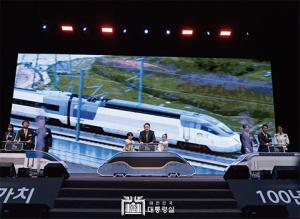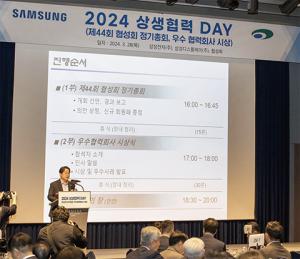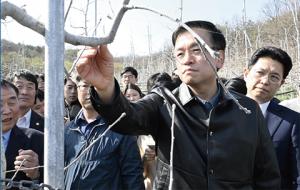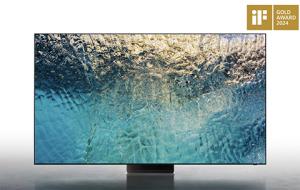‘폐기물 순환자원’, 새로운 패러다임을 제시하다
경기대학교 신소재공학과 이기강 교수
 빠르게 급변하는 현대사회에서의 환경문제는 더 이상 간과할 수 없는 중대한 과제로 남았다. 환경과 성장, 즉 녹색환경 실현에 앞장서며 신기술 발굴에 힘쓰고 있는 경기대학교 신소재공학과 이기강 교수는 골칫덩이 산업폐기물이 소중한 산업 자산으로 쓰일 수 있도록 한 장본인이다. 폐기물 순환자원의 중요성을 역설하며 밤낮없이 연구에 몰두하고 있는 학자의 열정은 식을 줄 몰랐다.
빠르게 급변하는 현대사회에서의 환경문제는 더 이상 간과할 수 없는 중대한 과제로 남았다. 환경과 성장, 즉 녹색환경 실현에 앞장서며 신기술 발굴에 힘쓰고 있는 경기대학교 신소재공학과 이기강 교수는 골칫덩이 산업폐기물이 소중한 산업 자산으로 쓰일 수 있도록 한 장본인이다. 폐기물 순환자원의 중요성을 역설하며 밤낮없이 연구에 몰두하고 있는 학자의 열정은 식을 줄 몰랐다.
저회로 벽돌의 탄생
1987년부터 3년간 포항제철에서 근무했던 그가 자원재활용 연구에 뛰어든 것은 그리 의아할 일도 아니었다. 당시 제철소에서 나오는 폐기물을 재활용하는 것을 접하고 관심을 갖기 시작한 그는 석탄회 처리해 달라는 어느 유연탄 운송업자의 말에 벽돌 제조를 가장 먼저 떠올렸다. 벽돌의 주성분은 논농사가 끝난 논바닥에서 긁어낸 흙이며, 석탄회도 이산화규소(실리카)가 풍부하니 이 흙을 대체할 수 있다고 판단한 것. 지금 현재 연구동 옆에 지어진 6층 건물에 이 교수의 저회로 벽돌이 전량 사용되기도 했다.
1990년 중반까지 벽돌 제조에 전념하던 그는 그해 말, 유해 중금속이 20%이상 포함돼 있고 매년 수십만 톤이 발생하는 골칫덩이 ‘EAF 더스트’에 주목했다. 중금속 수만 톤이면 우리나라 전 국민을 사망에 이르게 할 수 있을 만큼 방대한 양이다. 때문에 전량 녹여서 시멘트로 단단히 처리한 후 매립하는 등 처리 기법이 엄격하다. 그는 위험물질로 분류되던 ‘EAF 더스트’의 성분을 분석한 결과 획기적인 원료로서의 가치를 발견해 벽돌 제조에 응용하기에 이른다. 또한 이 기술로 1998년 특허를 받았고 에너지관리공단의 시범사업을 수주하기도 했으며 이후 2년간 벽돌공장을 인수해 폐기물 벽돌 1억장 이상을 제작·판매했다.
벽돌 1장을 만드는데 40%의 폐기물이 포함되니 1억 장을 만들어 팔았다는 것은 곧 4000톤의 폐기물을 재활용한 것이었다. 이는 경제적인 차원을 떠나 환경적으로도 그 의미가 매우 크다. 폐기물 처리에 대한 필요와 요구가 높았지만 그것을 이뤄낼 만한 곳이 부족했던 탓에 이 교수의 ‘프론티어 프로젝트’는 괄목할 만한 성과로 이어질 수 있었다.
환경을 살리는 ‘인공경량골재’
연간 발생하는 5000만 톤의 폐기물을 효율적으로 처리할 수 있도록 벽돌이나 골재 만드는 사업들이 추진되고 있다. 2010년 4월, 인천 옹진군 영흥화력발전소 옆에 일반 골재보다 40%나 가벼운 ‘인공경량골재’ 생산 실증 설비단지가 건설됐다. 이는 화력발전소의 저회를 이용해 인공경량골재를 만드는 공장으로, 친환경적이고 부가가치적인 제품 창출과 동시에 인력고용 확대 및 절감효과까지 가져오며 연간 20만㎥의 경량골재를 생산하는 세계최초의 생산 설비 공장으로써 환경과 경제발전에 앞장서고 있었다.
화력발전을 위해 석탄을 태우고 나면 시멘트의 원료로 사용되는 입자가 고운 비회, 재활용이 불가한 저회가 남는다. 2009년 기준 약 834만 톤의 회가 발생됐는데 그 중 재활용 되지 못하고 버려는 회의 양은 310만 톤, 여기에 연간 저회 처리 비용으로만 500억 원이 투입되고 특히 바다를 막아 만든 회처리장은 3년 뒤면 가득 차 심각한 문제가 예상되고 있다. 이러한 시점에서의 영흥발전소 설립은 산업현장에서 나오는 각종 폐분진을 골재의 원료로 대체해 인공경량골재를 만들기 때문에 그간 석탄재를 매립하며 발생했던 각종 환경문제와 대규모 회처리장의 신·증축 비용을 절감할 수 있게 했다.
“석탄회, 제철소 분진, 음식 찌꺼기 등 소각된 폐기물은 금속이 아니라 재활용이 가능한 세라믹입니다.”
제철소에서 고철용융 시 발생하는 전기로 제강분진, 제유공정에서 발생하는 폐백토, 석탄회, 광미와 그 성분이 유사한 석분 슬러지 등은 재활용에 사용할 수 있는 최고의 원료다. 이기강 교수는 폐기물 재활용은 ‘순환자원’의 개념으로 이해해야 한다고 역설하며 ‘폐기물’을 버리고 처리해야 하는 골치 아픈 것에서 순환되는 ‘자원’으로 인식, 생각의 전환이 이루어질 때 비로소 진정한 친환경사업의 자격 요건이 되는 것이라고 거듭 강조했다.
환경은 우리 삶의 가장 중요한 핵심 요소이다. 이기강 교수의 폐기물 순환자원 연구와 신기술 개발이 국내 환경기술 발전에 새로운 한 획을 긋기를 바라본다. 또한 그의 바람처럼 국민들의 폐기물 재활용에 대한 부정적 인식을 바로잡아 그 쓰임이 널리 알려지고, 그로인해 경제발전을 이룰 수 있기를 기대해 본다.
Environmental problem in the rapidly changing today's society has remained as a serious problem that cannot be ignored. Lee Gigang taking lead in environment & growth, green environment, and trying to develop new technology is the professor of New Materials Engineering of Kyonggi University. He is the very man who has invented the new technology which enables industrial waste a pain in the neck to be used as industrial property. The scholar whose study passion is enduring is immersing himself in research day and night.
The birth of Cinder Brick
Professor Lee who worked at Pohang Jecheol for three years bucked into the research of resources recycling, which was not surprising. At that time he encountered the recycling of waste from steel mill, which situation he started to give much attention to. The coal briquette carrier's words to deal with fly ashes made me recall brickmaking. The main ingredient of bricks is the soil scraped out from soil of a rice paddy. Since fly ashes is rich in silicon dioxide, this soil can be substituted, which he judged. The low circuit bricks only are used to build the six story building which was constructed next to the research building.
He was committed to the production of bricks until the mid-1990s. He took note of a pain in the neck "EAF dust" containing twenty percent of harmful heavy metal, and hundreds of thousands of tons of the dust is generated each year. Million tons of heavy metal is the massive amount enough to kill the whole nation of Korea. So the whole quantity of the dust has to be melted and reclaimed, after being treated hard with cement and the way of dealing with it is very strict. He analyzed the ingredients of EAF dust, found the value of ground-breaking raw materials, and applied it to the construction of bricks, with which technology he got a patent in 1990. He obtained the order for pilot project of Korea Energy Management Corporation. Since then, he purchased an brick factory, made and sold over one hundred million bricks using the wastes.
Making one brick contained 40% of wastes, and its making and selling one hundred million bricks, which means he recycled 4000 tons of wastes. This has a huge environmental significance besides economic one. The demand of disposing waste materials was high, but there was a lack of the disposal facilities. So the "Frontier Project" of professor Lee has made a enormous accomplishment.
Artificial Lightweight Aggregates Save the Environment
The project of making bricks or aggregates is being promoted in order to dispose 50 million tons of wastes efficiently which is generated each year. The facilities and production complex producing artificial lightweight aggregate 40% lighter than normal one was built April in 2010 next to Youngheung thermal power station Ongjin-gun of Incheon. This is the factory where we produce artificial lightweight aggregate using cinder of thermal power station, from which we can make eco-friendly and added value of products together with the expansion of employing people and saving effects. The factory taking lead in environment and economic development produces 200,000㎥ of artificial lightweight aggregate, and it is the world's first production and facilities plant.
The fly ashes is generated from burning coal for thermal power generation, and the one ash used for the raw materials of cement whose particle is very fine, and the other ash is incapable of being recycled. Eight million and three hundred forty thousand tons of ashes was generated as of 2009, 3.1 million tons of which cannot be recycled, and thrown out. The cost of 50 billion w on is being injected to dispose low ashes. Especially, the ash-disposal place made out of blocking up the sea will overflow after three years, which may be expected to cause a serous problem.
From this point of time, since we make artificial lightweight aggregate out of various dust of wastes being generated from industrial sites which is substituted for the raw materials of aggregate, the construction of Youngheung power plant is the most effective way for us to reduce the cost of constructing and extending a large scale of ash-disposal plant, and we can solve the various environmental problems which are generating from reclaiming coal ashes.
"The incinerated wastes such as coal ashes, dust of metal mill, scrapes from the meals is not metal but ceramic which can be recycled." Steelmaking dust of the electric furnace from melting scrap iron in the steel mill, spent bleaching clay from oil manufacture processes, coal ash, stone powder sludge containing the same ingredient of tailing are the best raw materials used for recycling.
Professor Lee Gigang emphasized that we should understand the recycling of wastes as the concept of recycled resources. "It is not until the change in the mind-set is consummated, ? from understanding wastes as big trouble things we should throw away and dispose of, to as circulating "resources" that true eco-friendly business has the requisite qualifications for it" he underlined.
Environment is the most important vital component in our lives. We hope that professor Lee's research of circulating resources of wastes and development of new technology can mark a new era in the development of environmental technology, and that by rectifying the nation's negative cognition of recycling wastes the use of it can be widely known, which achieves a remarkable economic development.
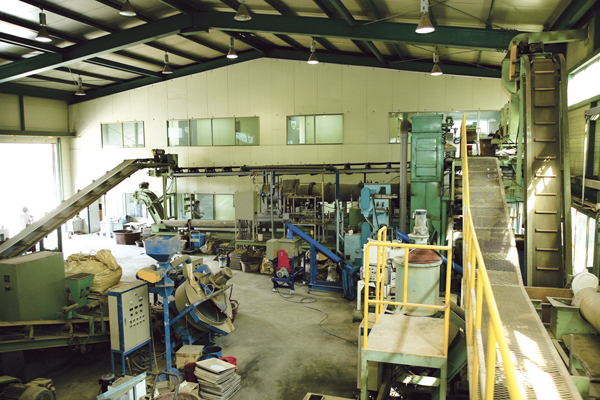
파워코리아

